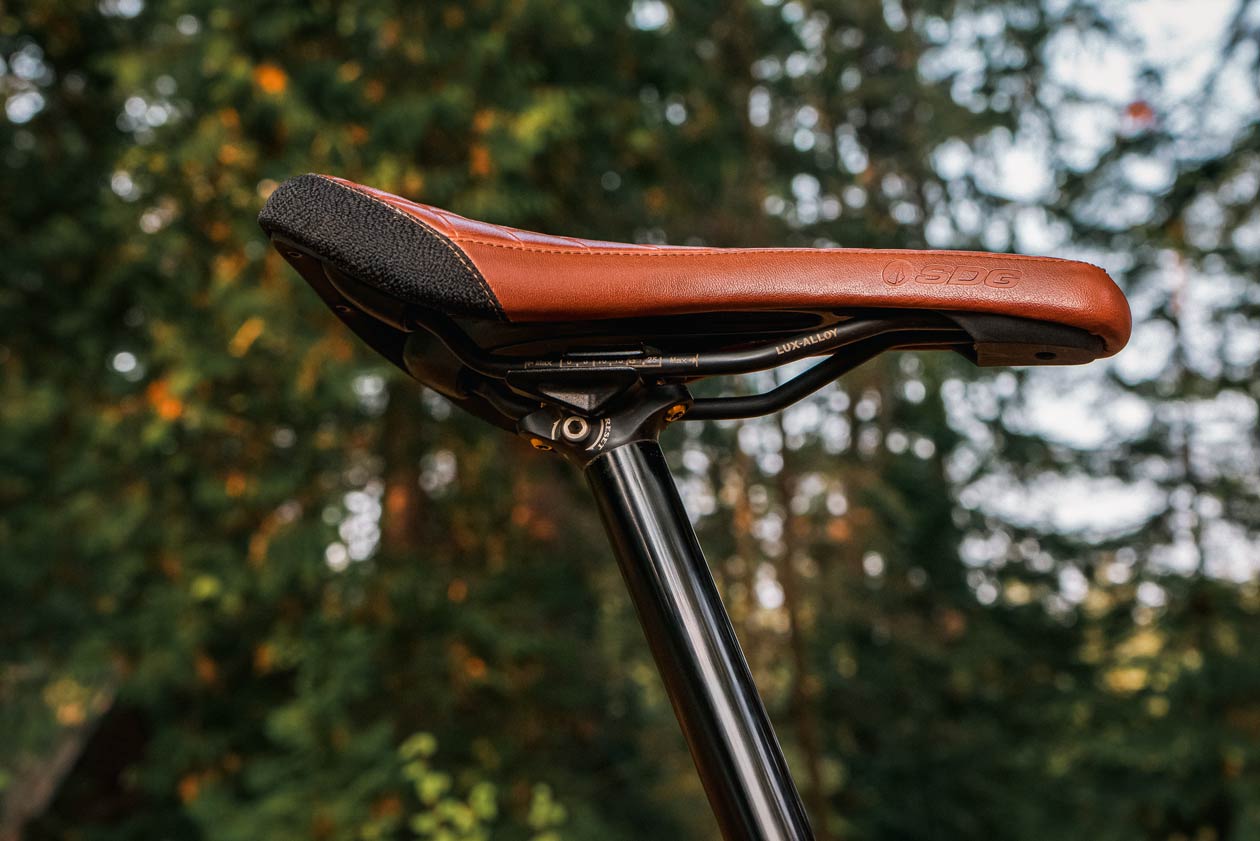
Pyga may be a brand that few people will recognize right away, but they’re looking to change that with not only a fleet of well-designed bikes, but some novel manufacturing methods that could change the way carbon fiber frames are created in the future. Their flagship bike utilizing this novel manufacturing method is one that straddles the line between XC and trail bike, dubbed the MoBu. Though the South African brand may not be a household name yet, can their little superbike stand up to the established competition? After a few years off of Pyga bikes, we were excited to find out.
QUICK HITS
• 118mm, 124mm or 135mm Horst Link Suspension
• HTA 66.5
• STA 76 (effective)
• REACH 486mm (XL)
Price: $4,995 (Frame, Fork, Shock)
Website: Pygamountainbikes.com
THE LAB
A close look at the swooping lines of the MoBu reveals a beautifully laid up carbon weave – the signature looks to their novel manufacturing method. Pyga developed the frame in conjunction with fellow South African company Blackstone Tek (BST), known for their carbon fiber motorsports racing wheels. This established reputation has given Blackstone a load of experience in tuning the strength and feel of their composites, all while nearly eliminating waste from their manufacturing process by using “reusable internal formers that are the precise shape of the inside form” instead of conventional one-shot bladders or foam cores. Additionally, BST developed their own resin for their carbon fiber, which has exceptional impact resistance and should therefore fend off crash damage better than standard frames. The MoBu is made by hand in South Africa, a fact that Pyga is very proud of.
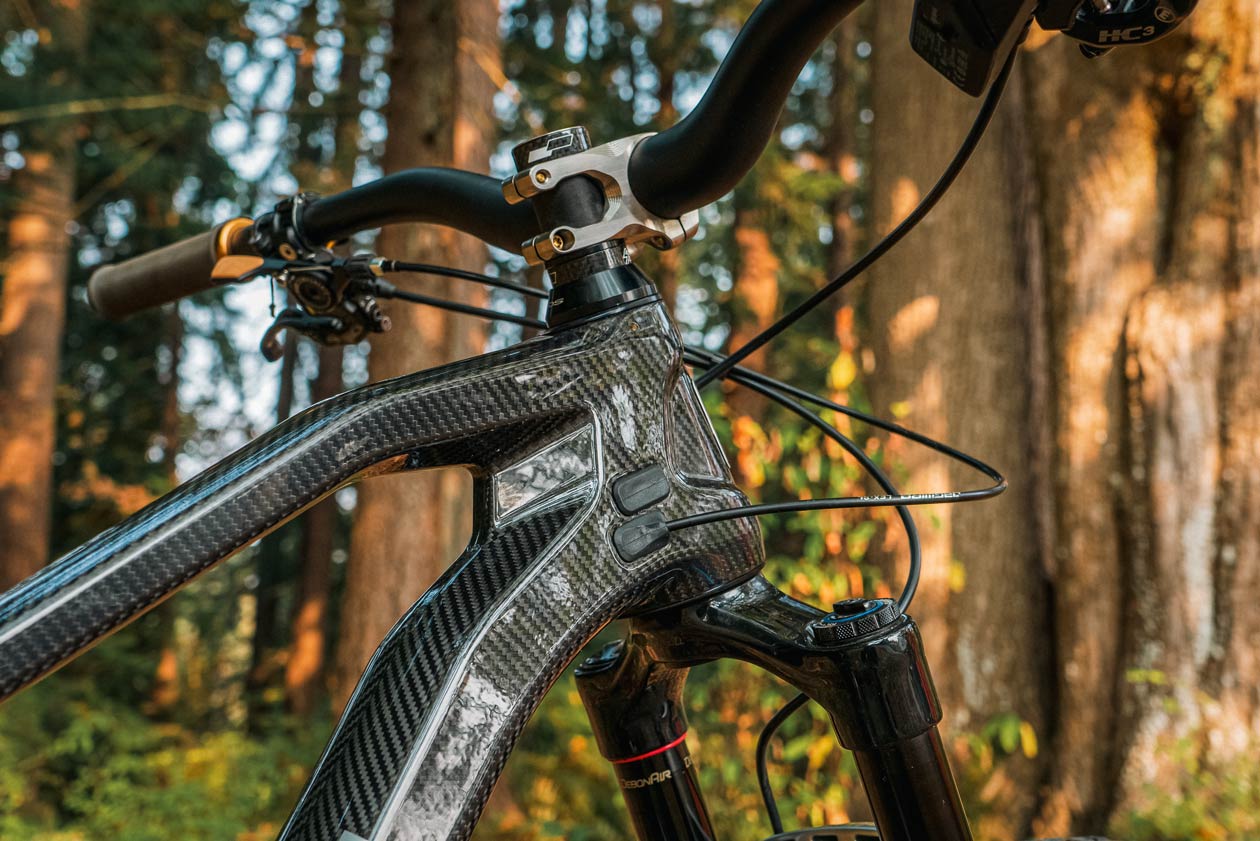
Beyond the creation of the frame though, there is quite a bit to dig into on the MoBu. Core to the frame is a flip chip that – when used in tandem with a change in shock stroke – allows you to shift the bike considerably between 118m, 124mm, and 135mm of rear wheel travel. In terms of kinematics, the MoBu’s Horst Link rear end has been designed to offer a reasonable amount of progression in both travel configurations, sitting at 15%. There’s reasonable anti squat of 115% in the climbing gears, and relatively low anti rise of 67%. There are knock-on alterations to the geometry chart as well, so for the purposes of continuity I’ll be referencing the longer travel, Trail side of that chart, which is the mode in which I tested the bike. In the trail mode, Pyga recommends a 130-140mm fork to lead the charge.
At the front of the MoBu, you have a racetrack-shaped headtube, allowing for an impressive 14mm of reach adjustment using an offset tapered cup, ranging from 486mm to 500mm on the size XL that I’ve been testing. The headtube angle is fixed at 66.5°, striking a nice balance between racy geometry and something a bit more capable. With a seat tube angle of 76°, you can remain comfortably seated while you’re pedaling your brains out, while a fixed chainstay length of 437mm should keep you from looping out too much under all that wattage. Wheelbase totals 1242mm in the longer reach setting, and the seat tube length is an XC-friendly 520mm.
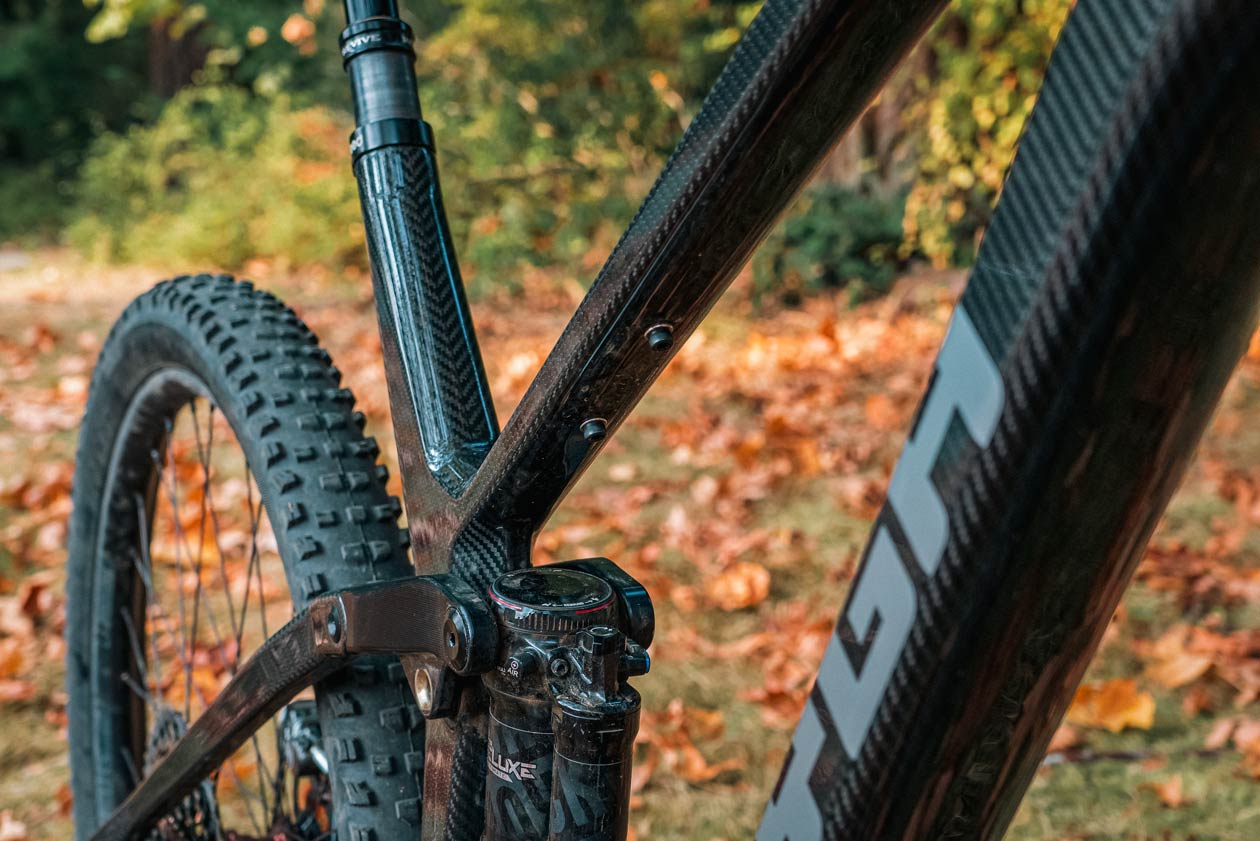
The rear end of the MoBu uses the boost axle standard, but it’s offset by 2.5mm to improve the chain line. Around the press fit bottom bracket, there’s a 2-bolt ISCG mount for those looking to add an upper guide, but a bash guard won’t work. The frame bearings are double-row full complement throughout the frame and sealed with an extra o-ring to keep the crud out. The frame provides not only one, but two bottle mounts, though I ran into some fitment issues when using a piggyback shock. You can still fit two 750ml bottles in the main triangle, but the lower of the two gets smacked by the shock reservoir when the suspension cycles. Maybe you could argue that this is unforeseen added bottom-out resistance, but mostly it’s just a small nuisance. I typically used the second bottle mount to hold my OneUp pump, using an inline mount from Jank Components. Despite a lack of tube-in-tube cable routing, I found it quite easy to route things through the frame, thanks to the relatively straight tube shapes, and the impressively smooth internal finish they’ve achieved. Things are held in place by some solid rubber plugs, and I found that the bike was relatively quiet once things were buttoned up.
A quick note on build kit, or lack thereof. Pyga only offers the MoBu as a frame and shock combo for the time being, so you’ll have to build yours up from there. I’ll comment on some of the standout components that came on this test bike, but keep in mind the open-ended-ness of build options. At $4,995 the MoBu is a frame with a decidedly premium price tag, but Pyga stands by the manufacturing and bearing quality with a lifetime warranty on frame and bearings. We were excited to find out if the performance matches the price tag.
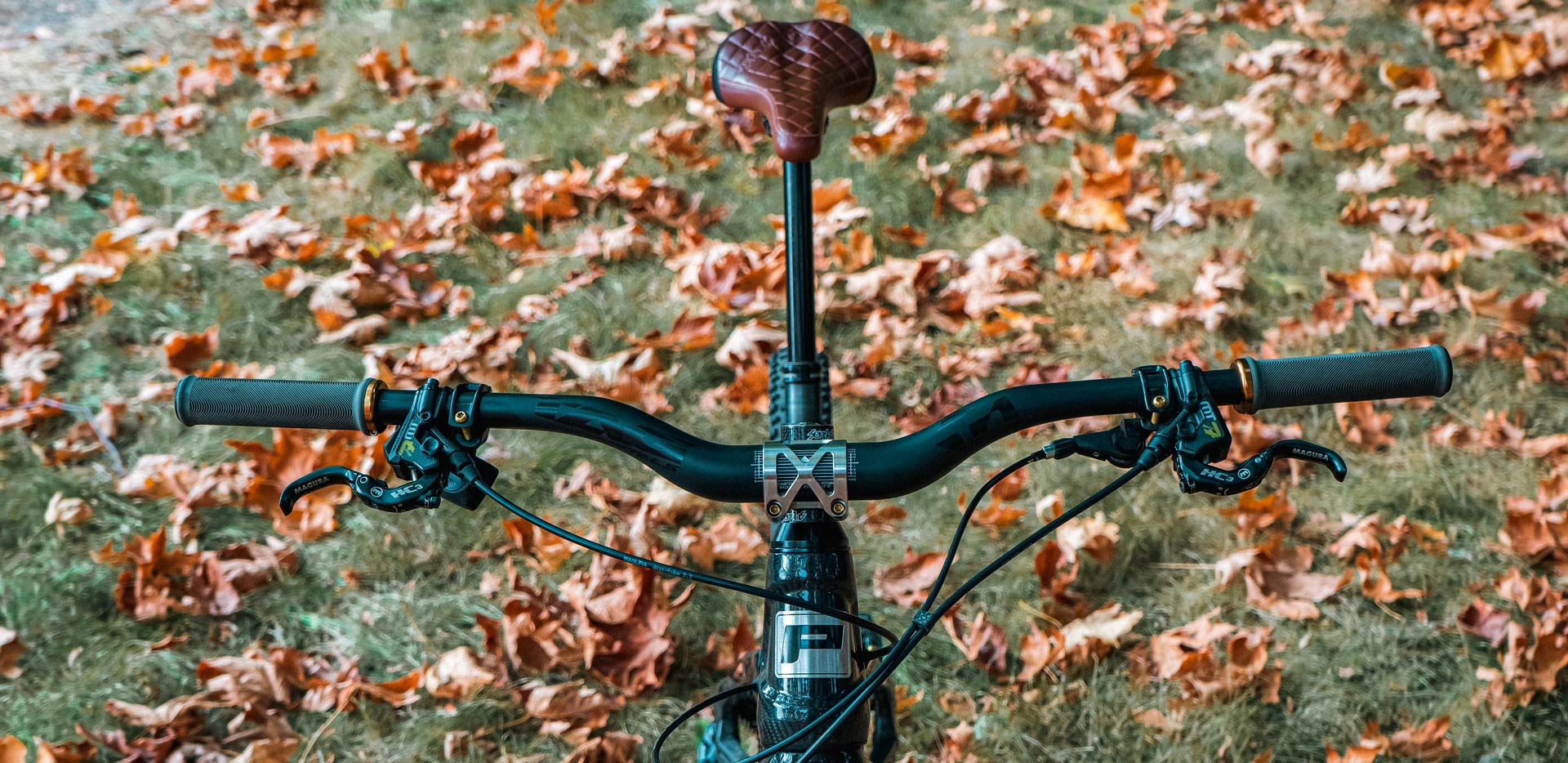
THE DIRT
There’s no shortage of sporty and fun bikes in the 130mm range these days, so it takes some doing to stand out from the crowd. The Pyga MoBu does this right off the bat with the unique form and finish of its frame but backs the looks up with an equally intriguing character on trail.
The MoBu is unapologetically biased towards support and climbing, let it be known. As someone who spends a lot of time on heavy, sticky, stable bikes, the Pyga quickly stood out as spritely and zippy. It may lack the all-out grip of a longer travel bike in slow technical sections, but you can simply approach that tech with more entry speed, allowing you to pop over top of things without having to winch up at all. The geometry of the frame lends itself towards higher output riding, as I’ve always found a longer reach to encourage out of the saddle sprinting rather than seated spinning. If you want something with a more traditional XC geometry, you can easily shorten the reach using the headset adjustment in only a couple minutes. The geo works in tandem with a rather high anti-squat number, which keeps support consistently high through the travel, giving the bike a firm feel when pumping and pedaling.
Cross country bikes tend to get a bad rap for their descending capabilities, which is perfectly fair considering how sketchy most of them are when pushed downhill. The MoBu aims to be a bit different from that typical crowd though, with geometry and kinematics that lend themselves towards something closer to a 50/50 split in the up/down balance. Though it’s not going to be your ride-everything bike, the MoBu is happy to pedal all day, and tackle a variety of terrain. What it lacks in grip and forgiveness when compared to burlier trail bikes it makes up for with support and efficiency, keeping the average pace high. The chassis is fairly stable thanks to a long reach and low bottom bracket, which allows the bike to rip through sections that might otherwise overwhelm the sporty suspension. This little whip has some tricks up its sleeve, and the one that surprised me most was just how well it jumps. This is probably due in part to the consistently supportive suspension and shorter back end, but the sum of all parts certainly delivers when you want to pop the bike off lips. The rear suspension handles single hits quite well, giving you time to react to the next bit of trail, though it can get overwhelmed when things get really choppy. The final piece of the puzzle is the chassis itself, and in this case that’s one of the standout features. The frame stiffness feels perfect for the purview of the bike, without any unwanted flex in corners or g-outs, but with enough give to mute the firmer feel of the trail surface.

It’s worth noting that I’ve been phrasing the MoBu as a cross country bike, despite the fact that it has travel numbers that are more suited to modern trail bikes. That’s because it feels like a longer-legged race bike, not a light trail or all mountain platform like some of the other bikes in this travel bracket. That’s by no means a downside, it’s just the nature of the beast, and something to keep in mind if you’re in the market for something like this. The closest proxy I can think of amongst the bigger brands out there would be the Transition Spur. The suspension feel and geometry are very similar, so it’s ultimately a matter of which frame speaks more to you. On the other hand, I’m amazed at just how different this feels to something like the Forbidden Druid, which sports just 130mm of rear travel – the two seem to be at opposite ends of the descending spectrum when it comes to this travel bracket. Comparisons like this are part of what keeps bikes so exciting to me, you never know what you’re going to get!
Since Pyga only sells the MoBu as a frame and shock, the build kit is a pretty open-ended area to discuss. I’ll just touch on a few components that came on the test frame, as I think it’s relevant to the feel of the bike.
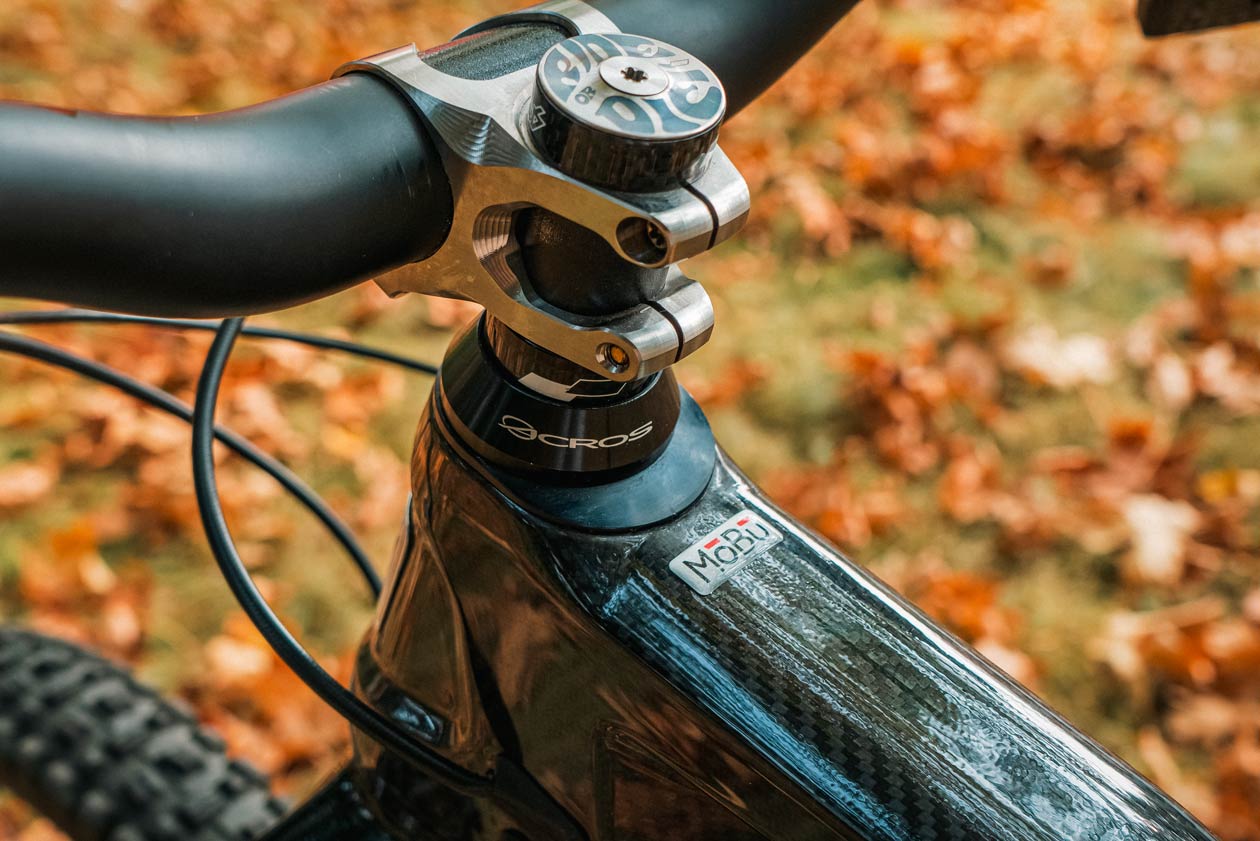
TAG Metals T1 Carbon Handlebars
The MoBu came with a 40mm rise variant of these bars, which may seem like an odd fit for an XC rig – until you hop on the bike. I love the feel of higher stack numbers, and thanks to the high rise of these bars, that can be achieved on what is otherwise a pretty low-slung frame. They felt damped and comfortable, and thanks to a geometry that’s quite similar to the classic Renthal bend, they rode very well.
Teravail Honcho Light&Supple Tires
There was almost nothing confidence-inspiring about these tires except how light they are and fast they rolled. As you’ll see in the shots of this bike, I pretty quickly swapped out to more aggressive treads, as the Honcho has little to no cornering bite in the front, and lasted all of one ride in the back before suffering a deadly slice. Bellingham is far from loose, and it’s pretty rare to get flats here, so the fact that this tire suffered in both respects doesn’t bode well.
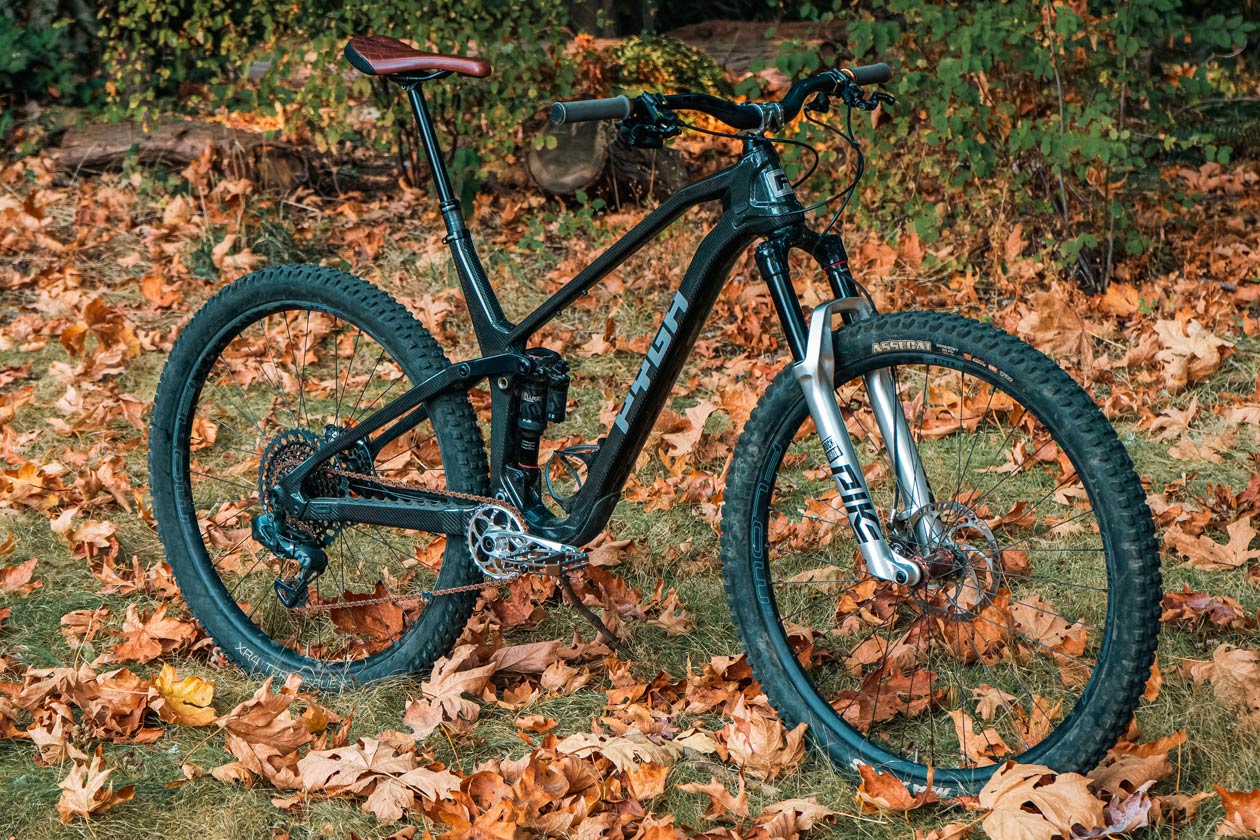
2021 Pike Ultimate
This fork feels like an excellent pairing with the Pyga MoBu. I’ve been riding the newest 2022 iteration of the Pike, and while I do like it, the older model Ultimate remains one of my all-time favorite feeling forks. It’s comfortable, easy to set up, and handles heavier terrain far better than any XC-oriented forks could, making it worth the extra weight in my book.
Magura MT7 Brakes
It may seem odd to put the same brakes you see on World Cup DH bikes onto a short travel trail bike, but in this case the pairing makes a ton of sense. With smaller rotors, the MT7s offer a bit of modulation, and the HC3 levers allow you to tune the feel to your preferences. The setup is very finicky, mostly due to the tight pad clearance, but once things are set it’s smooth sailing. I’m of the option that you can’t have too-powerful a brake on any given bike, so it’s nice to see something strong on a bike like this.
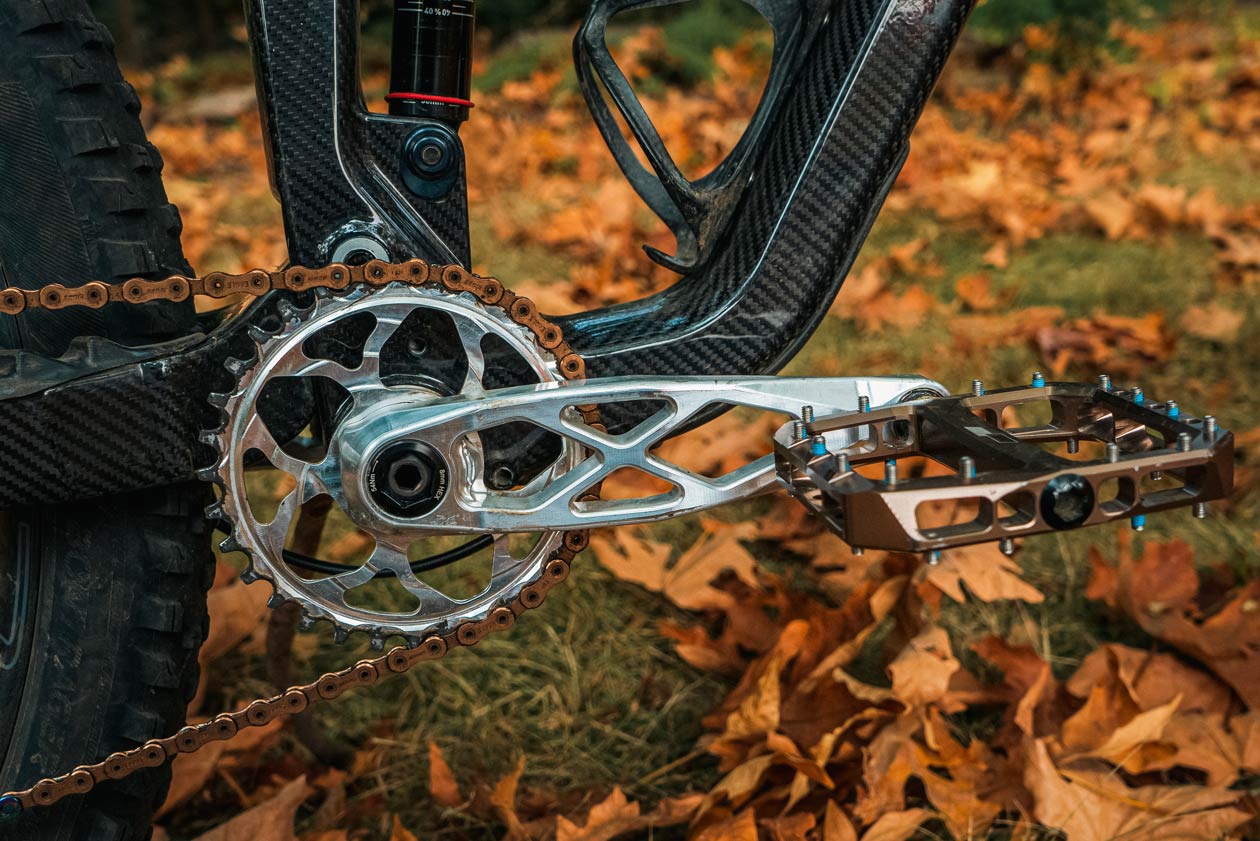
5Dev Cranks
These are the things that get the most questions on trail, out of every part of this bike. As one of the newest pieces of bike jewelry you can buy these days, I suppose it makes sense – and to be fair they do look pretty cool. That said, I see no reason at all to buy a crankset that costs four times as much as equivalent options, while offering no performance gains at all. Cranks like the SRAM GX or the Canfield Brothers AM/DH are made of forged aluminum, which will outlast CNC-milled 5Dev option in any situation, and come in just as many flavors and sizes. If aesthetics are your ultimate goal, then the 5Devs are a good option, but I’d save my coin if it were my build.
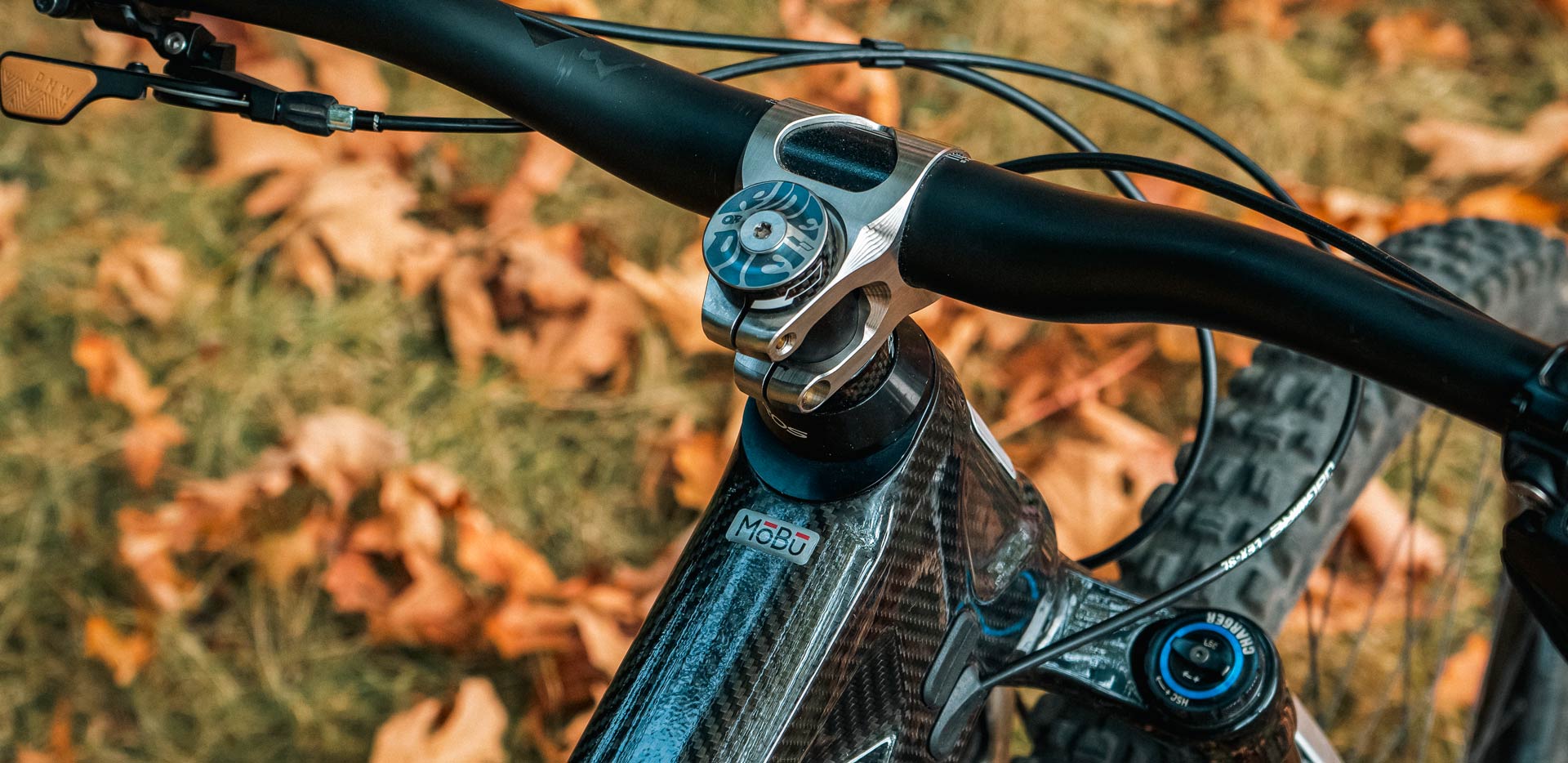
The Wolf’s Last Word
The Pyga MoBu is a unique beast; in many ways it feels like a cross country bike, but the geometry and relatively long travel allow it to push into terrain beyond the short track. While there are more capable bikes out there in this travel bracket, the high-quality frame and supportive ride quality make for a reliable long-ride partner and a generally fun time. ![]()
Price: $4995 w/ shock
Weight: 27lbs for a typical build
Website: Pygamountainbikes.com
SPECIFICATIONS
CHASSIS
Frame: Pyga MoBu Trail; 124mm
Fork: RockShox Pike Ultimate 130mm
Shock: RockShox Super Deluxe Ultimate 185x55mm
COCKPIT
Brakes: Magura MT7 HC3 180F/160R
Handlebar: TAG Metals T1 Carbon 35mm | 770mm | 40mm Rise
Stem: 5Dev Titanium stem; 32mm
Headset: Pyga reach adjust
Seatpost: BikeYoke Revive 2.0; 185mm
Saddle: SDG x Sensus Radar; Leather
WHEELS
Hubs: Onyx Vesper
Rims: Stan’s Flow MK4
Front tire: Teravail Honcho, Schwalbe Wicked Will, Maxxis Assegai
Rear tire: Teravail Honcho, Schwalbe Racing Ralph, Bontrager XR4
DRIVETRAIN
Bottom Bracket: SRAM Dub Threaded
Cassette: SRAM XG-1295; 10-52t
Cranks: 5Dev Trail/Enduro Cranks; 170mm
Shifter: SRAM GX AXS
Derailleur: SRAM XO1 AXS
We Dig
Fairly progressive geo for an XC bike
Very high quality frame
Full-custom build kit options
Fun and supportive suspension platform
We Don’t
Very expensive frame-only option
Not as capable as other bikes in travel bracket
LEAVE A COMMENT | WIN FREE STUFF
Want to win some free schwag? Leave a comment and vote up the most thoughtful comments and each month we’ll pick a winner. The person with the smartest and most helpful replies will earn some sweet new gear. Join the Pack and get the latest news and read the latest reviews on the top mountain and electric mountain bikes.


